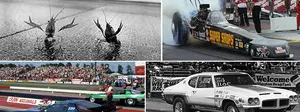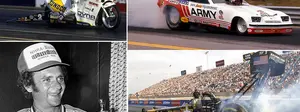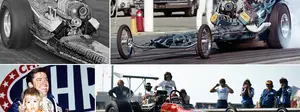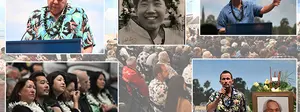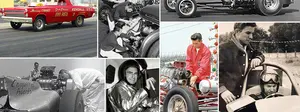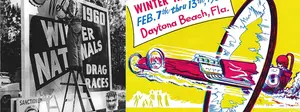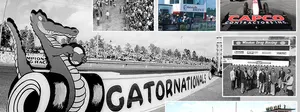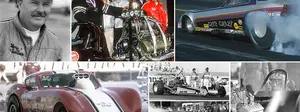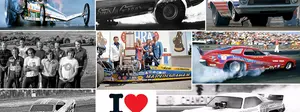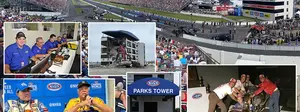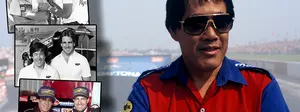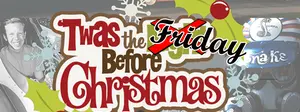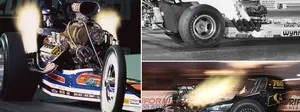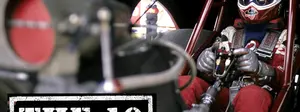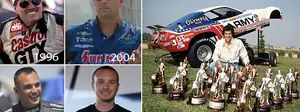The Keeling & Clayton story continues
It’s really gratifying when one of my columns develops into a multi-column thread that has a life all of its own. It has happened several times, with ramp trucks and wedge dragsters and my early favorite, “Growing Up Boy,” and the Keeling & Clayton saga has certainly joined that list. Jerry Clayton himself has been enjoying it as much as the rest of us and is truly touched and honored by the outpouring of love and respect shown by the Insider Nation, so here's more, including a lengthy and well-detailed report from Midwest drag racing authority Bret Kepner of Clayton’s drag racing career after the California Charger years, which includes interesting work in the Pro Stock classes that you might not have known about, and a few other fan-submitted images.
 |
Terry Knickerbocker sent along the photo of the K&K Pinto in peril at Irwindale in either late 1971 or early 1972 after it lost the left rear tire. An 11-year-old Phil was at the event and remembers it well, but Clayton obviously remembers it better.
“This was very close to an extreme disaster,” he said. “The whole end of the axle broke off; I don't remember whose axles we were using, except I do know it wasn't Donovan’s; he had one-piece forged axles, and the others out there had end pieces welded on to a piece of shafting. Ours broke at the weld; this was around the same era when Herm Petersen broke one similar and had a bad crash/fire at OCIR. Shortly, everyone had to have full floater-type rears. The wheel/tire did bounce and hit a light pole at Irwindale -- we had just put upturned, zoomie headers on the Pinto. It was the first outing, so the pipes were strong and able to support the car as it slid along the track; before, we had kinda weed-burner pipes, but after that gigantic wheelstand we did, the upturned pipes.”
 |
Reader Lance Peltier shared a link to an online gallery of photos of his love affair with the rear-engine California Charger, a very cool diorama of the team hard at work on the car. “I saw the model that you included and thought about the Keeling & Clayton pit scene that I built over 20 years ago for a model contest. I dusted it off and snapped a few pictures.
“I used to travel months at a time for my job, so I would build drag models in my hotel rooms instead of going out drinking. When I would get to a new city, I would find the hobby shops and find various parts for the scene. It took about three months off and on to complete it. “
Check this one out, fans. It’s very detailed. [Link]
And now, from the fertile memory of Mr. Kepner, it’s Keeling & Clayton, the later years. The photos embedded are also from Clayton’s collection.
“Your multi-chapter Keeling & Clayton feature was exceptional. As I watched each addition to the story, however, I was surprised to see it end with the 1977 season.
"I know the majority of casual NHRA fans believe John and Jerry dropped out of the sport after the last California Charger, but I think that same group would be interested to find both were heavily involved in drag racing for many years after the Trans Am Funny Car was gone.
“John Keeling became an integral part of the NHRA's Jet Car Committee; as an official NHRA inspector for all jet-powered machines, he was the liaison between the racers and the rules makers. He inspected and licensed every jet through the mid-1980s and was a close friend of virtually every driver who campaigned a thrust vehicle. His knowledge of jet powerplants was vast, but his greatest talent was an ability to explain the technical concerns of the jet fraternity to the many members of the NHRA hierarchy who knew little of those engines.
“Jerry Clayton, on the other hand, began an entirely new career in drag racing only a few years after leaving the fuel ranks. In 1980, Jerry jumped into the one position he avoided with the dragsters and floppers. He became a driver ... and an extremely good one, too.
 “My Pro Stock Monza with me driving at Great Lakes Dragaway. Early hood scoop and spoiler; no control past about 140.” |
“Teamed with the Royal Coach Auto Body shop in Chicago, Jerry created the Royal Coach Charger Monza Pro Stocker, which was every bit as gorgeous as the Keeling & Clayton rigs. It carried the legendary color scheme, (light blue, dark blue, spectacular lettering, and plenty of chrome), but, in true Jerry Clayton fashion, it was also a test bed for a bevy of ideas with which Jerry changed the sport.
“The Monza was built for the United Drag Racers Association Pro Stock Circuit, which, after 1977, had become a free-for-all with no rules to restrict even the wildest concepts. Jerry immediately immersed himself in the science of carbureted engines and was among the first to experiment with mountain motors. The Monza was built to be light, but Clayton made huge changes in the aerodynamics of Pro Stockers, which drastically improved the stability problems of the early ‘outlaw’ Pro Stockers. The Royal Coach Charger was notorious for debuting a radical new air-scoop design almost every week, and Jerry's scoops eventually evolved into a gigantic air ‘box,’ which became the car's trademark.
“The most amazing aspect of Jerry's Pro Stock career was his immediate rise to the top of the performance ranks. The Monza was one of the earliest to clock in the seven-second zone and nudged the 180-mph mark long before most of the ‘names.’ Most importantly, however, was Jerry's foray into nitrous-oxide injection. In the early '80s, several of the UDRA Unlimited Pro Stock teams began using nitrous systems, and, as many historians know, the UDRA became the proving ground for nitrous-injected big-block engines (the AHRA had already legalized nitrous for small-blocks). Jerry was one of the first to apply nitrous, and the Monza's legendary wheelstands on ‘the juice’ will never be forgotten by any witness.
 "Charlie Hnatek's Camaro. I ended up driving this car for testing stuff; Charlie drove the Monza in the races. When necessary, we switched if something went wrong. [Bret] Kepner was always on us! One time, we did a three-way switch with Ed Grief, who also had an engine I had built, and his new car lost the hood on the first pass. I was qualified with Charlie’s car, switched Ed into it for the second qualifying session (he was tall -- had to move seat 6 inches); he didn't make the show, so it was back to me for first round. Kepner figured out a Naval signal flag deal so he could tell who was doing what.” |
“In 1983, Jerry teamed with fellow Chicago UDRA Pro Stock racer Charlie Hnatek, with whom he created one of the few two-car Pro teams of the era. Although Jerry attended the full schedule of UDRA events, he incorporated Hnatek's '81 Camaro as a test bed for radical ideas through which he could gain twice the knowledge in one event. At any given UDRA race (and there were more than a dozen each season), the duo would swap engines, manifolds, nitrous systems, wings, scoops, and even driving duties between the two cars all in a quest for more information and better performance.
“Clayton (and a handful of his rivals) created a performance war among the UDRA teams, which led to amazing elapsed times and speeds. As many remember, these battles culminated in UDRA racer Bill Kuhlmann's first 200-mph speed by a passenger car in March of 1987, which was clocked in UDRA trim. Yet Jerry Clayton was at the forefront of doorslammer technology even before the advent of Top Sportsman, let alone Pro Modified!
“It should also be noted Jerry was active in political areas of the UDRA; Clayton was a board member of the association, which was run exclusively by racers. Along with multiple event titles, Clayton won most of the UDRA's major season awards, including Best Appearing and Best Engineered honors. By 1988, Hnatek had taken over the driving of the team's Royal Coach Charger Trans Am when the demand for duplicates of Jerry's powerplants became overwhelming enough to keep him out of the seat.
“I realize this is quite a diatribe, but I know Jerry well enough to realize he is far too humble to have brought up these facts in any conversations you may have shared. However, if you call him one more time and ask about his days as a driver, I'm sure he'll oblige with a few stories. I've always been amazed how many fans of the Keeling & Clayton cars never realized it was Jerry in that similar-looking Pro Stock Monza and, likewise, how many UDRA folks never made the connection from Jerry's cars to the California Chargers. While announcing all of the UDRA national and regional events in that era, I always made a point to mention his spectacular fuel racing career as well as the fact he is one of the few members of the drag racing fraternity to have been involved in all three premier divisions of competition.
"I still see Jerry on occasion, and he's still as down to earth and unassuming as ever. However, there is no mistaking the gleam of a brutal competitor in his eye and a hint of his brilliant technical mind in his discussions about his career.”
Thanks so much, Bret. That’s an awesome job chronicling something I love the most, the stories behind the stories.
Before I go, I wanted to mention that last week’s column about Gerry Glenn also raised a lot of interest, and I hope to hear from him next week to add another chapter to that tale.
I will be traveling next week to Charlotte for the four-wide event and the weekend after to Houston for that race, so I’m not sure when/how I’ll be updating next, but I promise I will do so at the first available opportunity.















